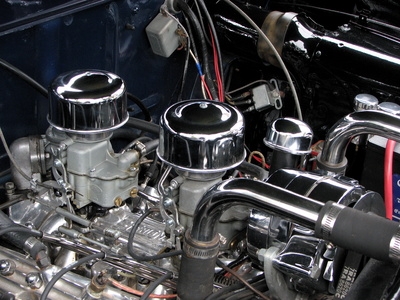
The goal of every engine builder or designer is to reduce internal friction. This is often achieved by substituting roller rockers for conventional rocker arms. Since roller rockers have a roller at the valve end, they literally roll over the valve stem face, instead of scraping across it. As a result, friction is reduced. Every time friction is reduced, more horsepower goes to the wheels instead of being used to overcome internal engine friction.
Understanding the basic principle of how a rocker arm works is necessary to understand the benefits. A rocker arm is essentially a teeter-toter like lever, transferring the upward movement of the push rod through the fulcrum point and pushing the valve down on the other side. Friction occurs at every contact point. This is especially true at the fulcrum point and the valve stem end that is being pushed down.
The fulcrum point has to take a lot of pressure. The push rod is pressing up on one side, and the valve stem spring is fighting the push down on the other side. A common rocker arm has a solid bushing or hemispherical ball at the fulcrum, which produces friction and robs horsepower. A roller rocker has a roller bearing (like a ball bearing, but only with rollers instead of balls) at the fulcrum point; a roller bearing takes pressure a lot better, and consequently reduces friction.
At the valve stem end, a regular rocker arm simply has a flat surface which slides across the face (end) of the valve stem. This scraping motion produces a lot of friction, again robbing horsepower. A roller rocker has a round wide wheel roller bearing at the valve stem end, which rolls instead of scraping the top of the valve stem. Because it rolls instead of scrapes, friction is reduced significantly.
The Corvette Club Grand Sport Registry ran unbiased side-by-side comparisons of a Chevrolet LT1 and LT4 engine. Even though both engines have the same 350-cubic-inch displacement, the LT4 produces more horsepower. Grand Sport Registry attributes part of the increased horsepower to roller rockers. By reducing friction in the LT4 over the conventional rocker arms used in the LT1, more horsepower is available to the wheels. Furthermore, Grand Sport Registry took both engines apart, and discovered galling (direct metal-to-metal contact caused by oil starvation) on the conventional rocker arms.